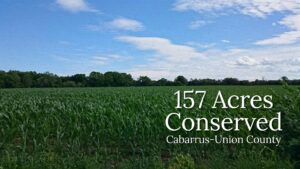
By Crystal Cockman
June 29,2016
A few years back, the NC Natural Heritage Program did an insect survey of the Uwharries. Insects are a good indicator of high quality habitats because they are often very specialized. They are also an indicator of well-integrated landscapes, because populations come and go and survival depends on being able to move between habitat units.
In the survey, several main habitat types were chosen including hillside seepage bogs, longleaf pine habitats, mesic forests, canebrakes, wet hardwood forests, dry woodlands, and basic forests. Species specific to these habitat types were looked for and found in many cases. In other cases these likely candidates were not located in the habitat types where they were expected.

One species of grasshopper appeared to be Melanoplus hubbelli, though it needs some additional confirmation. They are a grasshopper that is a montane disjunct, which means they are mostly known from the mountains. They are a member of the spurthroat grasshoppers, and are a watch list species in North Carolina. Melanoplus is a large genus of grasshoppers, and the largest of this species reaches 2 inches in length.

The results of the study identified 692 species. Of these, 37 were odonates (dragonflies and damselflies), 42 were orthopterans (grasshoppers, crickets, katydids, locusts), 60 were butterflies, and 519 were macromoths. Of these species, 7 were significantly rare, and 14 were watch list species. 75 were habitat or landscape indicator species.
